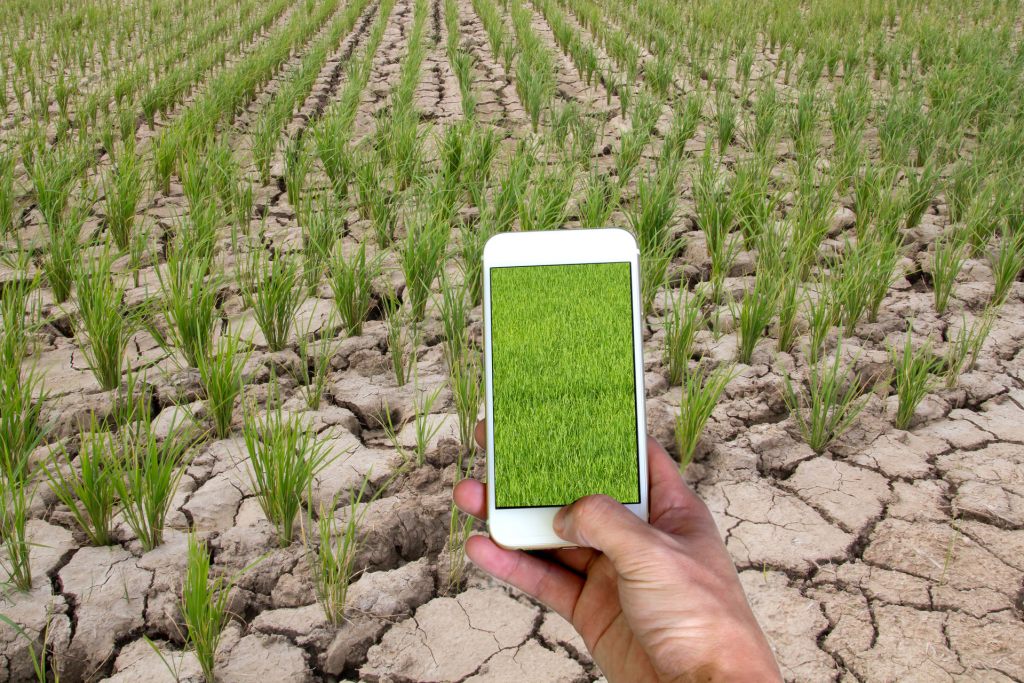Smartphones: the most essential piece of farming equipment?
In the first of a series on technology in agriculture, we talk to Dale Kirby about the smartphone.

In 2007 Steve Jobs unveiled the iPhone. Farmers in Australia at the time were probably unaware of the fact that this bespectacled Yank across the Pacific had just unleashed a massive game changer that would set in motion dramatic changes to their industry. iWhat now? It wasn’t just farmers, nobody saw it coming. Not even Jobs himself could have foreseen the extreme ways in which mobile technology would change our lives. And yet it could now be argued that a smartphone is fast becoming the most essential piece of farming equipment, bridled only by internet speed.
In the palm of their hand a farmer now holds instant access to commodity price updates, any manual ever written; any trader, service provider or distributor they could possibly need. An iPhone can drive a drone or collect data from a Fitbit on a sheep 50 kilometres away. Fitbit data can indicate in real time whether livestock are walking or running, when an animal is chewing its cud or eating grass, and where they are eating in the paddock. An iPhone can now tell you when there’s pest-animal predation, detecting that sheep will run at a different rate when there are wild dogs around. That little device launched a decade ago is now being used to control irrigation watering remotely, monitor the movement of machines in the paddock or connect to a mobile walk-over weighing system.
“There’s an app for virtually everything,” explains Dale Kirby, Local Land Services advisory services team leader. “It’s that instantaneous feedback all the time, it’s an immediacy of information, we’re able to make decisions so much faster just because of that connectedness through using technology. You’ve got more power in your hand than they use to launch a space shuttle, and farmers are making use of that. You talk about the most essential piece of equipment on the farm; other than a pair of boots, it really is a smartphone.”
While mobile technologies in agriculture are improving efficiencies, saving precious time and improving a farmer’s ability to make the best decision, they’re also changing agriculture in a much less obvious way. Sitting up in a tractor cab and tweeting a shot of five screen monitors in a cotton picker that’s currently being guided by satellites means the iPhone has become an extremely powerful tool in changing perceptions of agriculture. And perception is everything - it drives consumer choices and trends, determines government policy and laws.
“Not only is it a connection to the outside world but farmers can share a lot of information to a lot of people very quickly and easily,” Dale says. “It’s really the ability to show what a farmer actually looks like, what they actually do.”
Photo credit: Copyright: <a href='https://www.123rf.com/profile_janews094'>janews094 / 123RF Stock Photo</a>
in Latest News
Share this post
Posts this year
- October 2024 (1)
- September 2024 (1)
- August 2024 (1)
- November 2023 (1)
- June 2023 (1)
- February 2023 (2)
- November 2022 (1)
- October 2022 (1)
- July 2022 (2)
- June 2022 (1)
Archived Posts
- Posts in 2023
- Posts in 2022
- Posts in 2021
- Posts in 2020
- Posts in 2019
- Posts in 2018
- Posts in 2017
- Posts in 2016